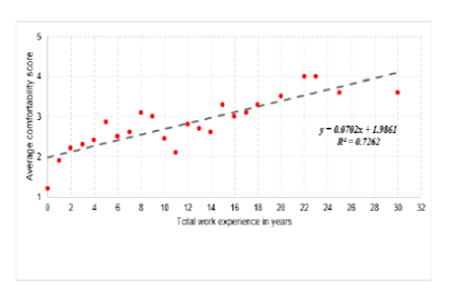


Indian Journal of Science and Technology
Year: 2022, Volume: 15, Issue: 16, Pages: 742-749
Original Article
Fahad Afzal1*, Satya Mehra1, Hemant Kumar Mishra2
1Research Scholar, Institute of Health Management Research,, IIHMR University, Jaipur, India
2Assistant Professor, School of Development Studies, IIHMR University, Jaipur, India
*Corresponding Author
Email: [email protected]
Received Date:21 March 2022, Accepted Date:26 March 2022, Published Date:02 May 2022
Background: Hospital Information System (HIS) is used to improve intraorganizational communication and retrieve digital copies of medical records. In India, approximately 300,000 paramedics passed out annually from 8500 institutes, without HIS knowledge. In lack of trained paramedics, and unseen expenditures to train them, it is required to understand what is needed to augment efficiency in hospitals for generating revenue. Objective: The current paper aimed to bring attention about how HIS user comfortability is influenced through work experience in years, personal usage of computer for self-work, and hospital size (bed strength) where paramedic works. This is essential to improve work efficiency and enhance the quality of services. Methods : A crosssectional study with 505 paramedical staff through snowball sampling was interviewed online through a pre-tested schedule in Delhi-NCR. The sample size was calculated using Cochran’s formula, considering the 50.0% prevalence of untrained paramedical on HIS. Correlation, regression, and Pareto analysis were conducted in SPSS (version-22.0). Findings: Although HIS awareness is high, 97% respondent did not receive any kind of computer education. 75% of them owned it through on-job experience and 96% of the respondent agreed that HIS training should be inculcated in academics. The correlation and regression association were found positive between “hospital work experience” (R2 = 0.72), “numbers of hours computer used in a week” (R2 = 0.92) with “average comfortability score of using HIS”. Novelty: This paper brings forth the idea of understanding “average HIS user comfortability score” and “prevalence of HIS training in paramedic academic”. The full potential of HIS to generate business is underutilized in India. This could be achieved by modifying existing paramedic curriculum. Currently, majority of problems associated with the HIS use is rectified by swift IT support, and intensified on-job-training, however it could be mitigated by intervention in the form of mandating HIS training in academic.
Keywords: Electronic Medical Records; HIS User Comfortability Score; Hospital Information System; Paramedics; Health Management
© 2022 Afzal et al. This is an open-access article distributed under the terms of the Creative Commons Attribution License, which permits unrestricted use, distribution, and reproduction in any medium, provided the original author and source are credited.
Published By Indian Society for Education and Environment (iSee)
Subscribe now for latest articles and news.